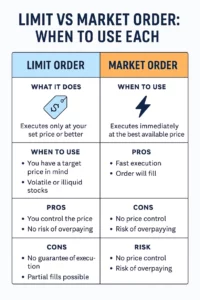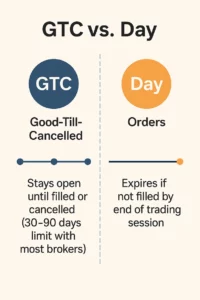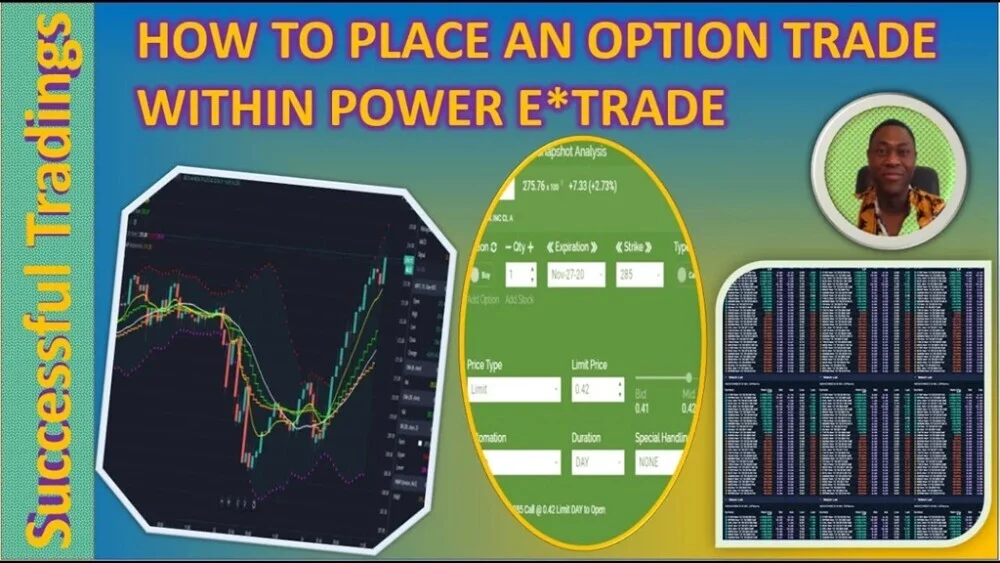I sit down to guide you through using limit orders more safely in the stock market. I aim to share practical insights from my own journey, ensuring you feel informed and confident. Let’s dive in calmly yet enthusiastically.
Table of Contents
Why I Trust Limit Orders Over Market Orders
I often prefer limit orders because they give me control over the price I pay or receive. Instead of accepting whatever the market dishes out instantly, I set a specific target price, and the order only executes if the market matches or betters that. This protects me from paying extra or selling too low.
Moreover, I avoid nasty surprises caused by slippage—which is the difference between expected and actual trade prices. By demanding precision, I shield my investments from unexpected swings. However, I also accept the trade-off: my order might not execute if price doesn’t reach my limit.

What Is a Limit Order
Before going too deep, I clarify exactly how limit orders work.
A buy limit order waits for the stock to drop to your target—or lower—before buying.
A sell limit order waits for a price rise to your target—or higher—before selling.
This means you get the price you want, but you might miss out if the market never reaches that point.
Thus, I always align my limit order with realistic price expectations.
Benefits of Limit Orders for Risk-Conscious Investors
- Price control: I lock in the price I’m comfortable with, avoiding letdowns from sudden moves.
- No slippage: Still calm, I protect myself from adverse fills that can eat away my gains.
- Better risk management: I define my worst acceptable price before entering a trade.
- No constant monitoring: I queue my trade, walk away, and let the market do its work.
That said, I emphasize that limit orders won’t always fill. I balance patience with strategy accordingly.
Setting Up Effective Limit Orders: My Step-By-Step Guide
- Know your target zone
I look at recent support or resistance levels to identify where price may reverse. - Choose realistic price points
I avoid overly optimistic or pessimistic targets. For instance, if a stock trades at $50, I might place a buy limit at $49, not unrealistic low. - Adjust order duration
I typically choose “Good-Til-Canceled” (GTC) when holding ballpark levels over days. For day trades, I use “Day” orders to prevent stale trades. - Consider partial fills
If liquidity is low, I may receive half an order filled. I write my order size accordingly—or break large orders into smaller chunks. - Monitor and tweak
I check performance daily. If price moves steadily away, I reconsider my limit or strategy.
GTC vs. Day (when to use which)
When placing a limit order, you’ll usually see two choices for how long the order stays active: Day or Good-Till-Cancelled (GTC). Each serves a different purpose depending on your trading style and timeframe.
-
Day Orders
A Day order remains active only for the current trading session. If it doesn’t get filled by the close, it automatically expires. Day orders are ideal for short-term traders who want precise entries or exits without leaving unmonitored orders in the market overnight. They keep your order book clean and reduce the risk of sudden overnight news impacting your position. -
Good-Till-Cancelled (GTC) Orders
A GTC order remains open until it’s either filled or manually cancelled, though most brokers limit it to 30–90 days. GTC orders are best when you have a clear target price but aren’t sure when the market will reach it. Swing traders and long-term investors often use GTC orders to patiently wait for favorable entries or exits without having to re-enter orders daily.

When to use which:
-
Use Day orders if you’re actively watching the market and want control over your trades on a session-by-session basis.
-
Use GTC orders when you have a firm price target and prefer automation over constant monitoring.
👉 Pro tip: If you’re trading a fast-moving stock, Day orders often make more sense. If you’re buying dips in a long-term investment, GTC keeps your strategy alive without daily babysitting.
Real-World Example from My Watchlist
I have a Discord Channel where I trade stocks and options with my community.
Here is how I use limit order in a recent trade on a very promising stock.
When SoundHound AI, Inc stock (ticker SOUN) hovered at $13, I believed it would pull back near $12 before resuming upward. I placed a buy limit order at $12.10 and another one at $12.25, with a target sell limit at $17 or more.
Two days passed. It hit $12 exactly—I got filled. Then, as planned, I can now use the shares for a covered call strategy. No regrets, because I prepared and trusted this limit order technique.
FAQs
Q1: What if my limit order doesn’t fill?
If price never meets your limit, the order simply stays open or expires. That may feel frustrating—but it’s also protective. You didn’t buy at the wrong price.
Q2: Can I cancel a limit order anytime?
Yes, most brokers let you cancel or modify limit orders until they fill, giving you flexibility to adapt.
Q3: Should I use limit orders for long-term investing?
Yes, especially for dollar-cost averaging. For example, setting a daily limit near a target price helps you accumulate smoothly at controlled cost.
I like to set up price (or any other indicator) alerts on Tradingview so I can easily confirm my entry point.
Q4: How do brokers prioritize partial fills?
When matching orders, the system may fill based on volume and time priority. If only part of your limit executes, the remainder sits pending until matched.
Q5: Can algorithms detect my limit orders?
Some high-frequency algorithms might sniff out visible orders.To obscure your intent, you could use hidden or iceberg orders—though these vary by broker and whether they support them.
| Order Type | What it does | When to use | Pros | Cons | Execution certainty | Price control | Risk control |
|---|---|---|---|---|---|---|---|
| Limit | Executes at your price or better. | You want a specific entry/exit, not “whatever fills.” | Prevents overpaying/underselling; great for thin liquidity. | May never fill; partial fills possible. | Low–Medium | High ✅ | Medium (pair with stops) |
| Market | Executes immediately at best available price. | Urgent entry/exit; highly liquid names. | Fast fill; simple. | Slippage; poor in illiquid spreads. | High ✅ | Low | Low (use with caution) |
| Stop | Becomes a market order when the stop price is hit. | Protect downside or trigger entries on momentum. | Automates exits; limits decision lag. | Gaps can slip past stop; fills may be worse than stop. | High after trigger | Low after trigger | Medium–High |
| Stop-Limit | Becomes a limit order once stop is hit. | Want protection but won’t accept any price. | Keeps price discipline after trigger. | May not fill in fast moves; risk of no exit. | Low–Medium after trigger | High ✅ | Medium (trade-off: control vs fill) |
Q6. Does a limit order guarantee my trade will execute?
A limit order only executes if the market reaches your specified price or better. Therefore, if the stock never hits your price, the order remains unfilled.
Q7. What’s the difference between a limit order and a market order?
A market order executes immediately at the best available price, while a limit order executes only at the price you set or better. Limit orders give you price control but no guarantee of execution.
Q8. Should I use GTC (Good-Till-Cancelled) or Day limit orders?
Day orders expire if not filled by market close, while GTC orders stay active until executed or cancelled. As such, Day orders are better for short-term plays, while GTC fits longer-term entry targets.
Q9. Can limit orders help protect me from big losses?
Yes. Using sell limit orders lets you lock in profits, while buy limit orders prevent you from overpaying. Consequently, pairing them with stop-loss orders creates a balanced risk strategy.
Video Recommendation
I recommend checking out this helpful video from the Successful Tradings YouTube channel:
Using a Limit Order Only Trading Strategy to Maximise Profits
It breaks down how traders can use only limit orders to manage entries and exits—helpful, because it reinforces many ideas I’ve shared here.
CONCLUSION
Using limit orders gives me control over price and helps manage risk.
While I may sometimes miss trades, I prefer precise execution over uncertainty.
By picking realistic limits, adjusting order settings, and aligning with my strategy, I trade more confidently and calmly.
I hope this guide empowers you to use limit orders more effectively.

Hold a Master Degree in Electrical engineering from Texas A&M University.
African born – French Raised and US matured who speak 5 languages.
Active Stock Options Trader and Coach since 2014.
Most Swing Trade weekly Options and Specialize in 10-Baggers !
YouTube Channel: https://www.youtube.com/c/SuccessfulTradings
Other Website: https://237answersblog.com/
